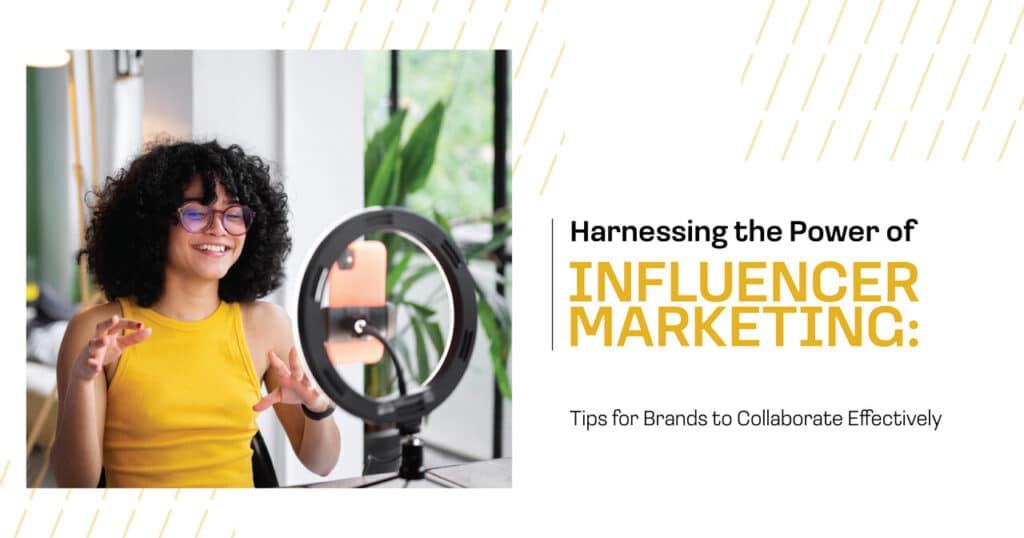Influencer marketing, once considered an afterthought add-on, is quick to have gained stature as one of the most powerful tools to connect with the customer. This way, influencers are now facilitating deep-rooted relationships through that Instagram post, that YouTube review, or that TikTok takeover. Shifting trends present excellent opportunities for brands to build trust, increase brand awareness, and convert it into sales.
Essential Takeaways
- Choose the Right Influencer: Align with influencers who share your values.
- Foster Long-Term Partnerships: Build trust and authenticity.
- Measure and Optimize: Track KPIs to refine strategy.
In this article, we’ll explore the world of influencer marketing and how brands can harness their full potential. We’ll break down the types of influencers, how to set goals, find the right partners, craft compelling campaigns, and measure success. Let’s get started!
What Is Influencer Marketing, and Why Is It So Popular?
It’s a type of social media marketing wherein endorsements or mentions of any product come from an influencer who has a loyal following and is known for having expertise in his or her niche. Influencers can be huge, such as celebrities. Alternatively, they can also be called micro-influencers, with much smaller yet highly engaged audiences.
The strength of influencer marketing lies in the fact that it can reflect a relationship with the audience. It is relatively more personal than conventional advertising. It feels like a friend recommended it who can be trusted, which comes as more valid to wary consumers against some blaring advertisements. Recent studies reveal that about 63 percent of consumers trust influencers more than brand advertisements.
How Influencer Marketing Became Mainstream?
Influencer marketing has now become one of the main marketing methods in the last decade. The first trendsetters who started cooperating with brands and offering reviews and product placements were the bloggers and YouTubers at the beginning of the 2010s. This industry is now a humongous $16 billion industry. Today, the critical battle arenas for influencers are Instagram, TikTok, and even LinkedIn.
Statistics That Show the Impact of Influencer Marketing on Brand Success
- 89% of marketers say ROI from influencer marketing is comparable to or better than other marketing channels.
- For every $1 spent on influencer marketing, brands earn $5.78 in return, on average.
- 71% of consumers are more likely to purchase based on a social media referral.
Types of Influencers: Choosing the Right Partner for Your Brand
When it comes to influencer marketing, not all influencers are created equal. You need to choose influencers who align with your brand, values, and audience to get the most out of your influencer marketing strategy.
Mega-Influencers: The Big Names with Big Reach
A mega-influencer is a celebrity or someone well-known, popularized, and famous, often with millions of followers. Think actors, musicians, or famous athletes. Mega-influencers can offer a unique reach, but again, working with them comes at a price. Mega-influencers are great for those extremely big brand awareness campaigns but will probably offer different engagement results than influencers with smaller followings.
Macro-Influencers: Authority Figures with Niche Communities
In macro-influencers, one may find followers ranging from 100,000 to a million. Generally, these people are thought leaders or authorities in their fields, meaning they have more credibility in niche markets. A famous fitness coach and a recognized tech reviewer exemplify macro-influencers. This broad reach lets them make a splash whilst their credibility is well established – with their audience, in this case.
Micro-Influencers: The Sweet Spot of Engagement and Trust
Most micro-influencer’s followers fall within the range of 10,000 to 100,000. They are recognized to be much more accessible and reliable compared to the macro and mega influencers. According to reports, micro-influencers have higher engagement rates, making them perfect when truly connecting with a particular crowd. Micro-influencers are very close to their audience, which makes their endorsements more valuable.
The Importance of Goal Setting in Influencer Marketing
Before diving into influencer partnerships, brands must be clear about what they want to achieve. Setting goals helps guide your strategy and ensures you can measure success effectively.
What Does Success Look Like for Your Brand?
Are you looking for brand awareness, increased sales, or followers on social media? Every brand has different goals for influencer marketing. Hence, defining what success means to you is essential. You will also define SMART Goals: Specific, Achievable, Relevant, and Time-bound, ensuring your campaign stays focused and on track.
For instance, metrics like follower growth and reach will be relevant if you want to achieve brand awareness. If you want to grow your sales, you should better track metrics like conversions and referral traffic.
Choosing the Right Metrics: From Awareness to Sales Conversions
Here are a few key metrics to consider:
- Reach. How many people saw your influencer’s content?
- Engagement. How many likes, comments, and shares did the post generate?
- Conversions. How many people clicked on the link and made a purchase or took another desired action?
- ROI. How much return are you getting for every dollar spent on the campaign?
How to Find the Right Influencer for Your Brand?
One of the most crucial steps in influencer marketing is finding the right influencers to represent your brand. Your ideal influencer should align with your brand values and resonate with your target audience.
Step 1: Define Your Ideal Influencer Profile
Start by asking yourself the following questions:
- What is your target audience? (Demographics, interests, behaviors)
- What platform(s) are your customers most active on?
- What type of content resonates with your audience? (Videos, blogs, social media posts)
- What values and personality traits should your influencer embody?
Step 2: Research Influencer Platforms and Tools
Numerous platforms exist to assist brands in discovering the perfect influencers, including BuzzSumo, AspireIQ, and Upfluence. These tools enable you to search for influencers based on their niche, audience size, and engagement rates. Moreover, they help you steer clear of collaborations with influencers who may possess fake followers or exhibit low engagement.
Step 3: Avoid Fake Followers and Inactive Engagement
Make sure the influencer is authentic before you enter some kind of partnership. Seek persons who are about values. Tools like Hype Auditor can help in analyzing the engagement of an influencer with the audience and prepare content that would resonate well with your brand audience in case of fake followers or bots.
Successful Collaborations: Building Real Relationships
Influencer marketing is about more than just getting a shoutout. It’s about forming genuine, long-term relationships with influencers who share your brand’s vision.
Make It Personal: Reach Out With Genuine Interest
When reaching out to influencers, personalize your message. Take the time to mention why you love their content and think they would fit your brand well. Avoid sending generic emails or DMs, as influencers receive hundreds of partnership requests.
Communicating Your Brand Values and Vision Effectively
Communicate the brand values and vision for building a successful collaboration. This helps the influencer understand the brand itself and craft authentic content that really works well with its audience, and mainly it works best only when the brand and influencer are aligned with the goals.
Don’t Treat It Like a Transaction: Why Long-Term Partnerships Win?
Instead of considering influencer marketing a one-time transaction, focus on building long-term relationships. Long-term partnerships create trust and credibility with an influencer’s audience, which leads to more authentic content and better results for your brand.
Creating a Winning Influencer Marketing Campaign
Now that you’ve found the right influencers and set your goals, it’s time to craft a winning influencer marketing campaign.
Campaign Types to Consider: From Unboxing to Giveaways
There are many different types of influencer marketing campaigns to choose from, depending on your goals:
- Unboxing and Product Reviews. Perfect for showcasing new or innovative products.
- Sponsored Content. Influencers create posts that feature your brand’s product or service.
- Giveaways and Contests. Great for driving engagement and building awareness.
- Takeovers. Influencers take over your brand’s social media account daily to engage directly with your followers.
Setting the Budget: Determining Costs and Value
Although the cost of working with influencers varies greatly, this highly depends on the number of followers, engagement levels, and niche. When using micro- and NATO influencers, low fees are typically paid in exchange for high engagement levels. The macro- and mega-influencers yield far greater riches. These will also cost a lot, but it is essential to balance the cost of doing it and the return on investment.
Timeline and Coordination: Getting All the Pieces in Place
Establishing a clear timeline for your campaign is crucial. Ensure the influencer understands the content creation, posting, and reporting deadlines. This will help avoid miscommunication and keep the campaign running smoothly.
Influencer Marketing Compliance: Staying Within Legal Boundaries
Compliance is a critical aspect of influencer marketing. Brands and influencers must adhere to legal guidelines, especially when disclosing paid partnerships.
Understanding FTC Guidelines: What Needs to Be Disclosed
In the U.S., the Federal Trade Commission (FTC) requires influencers to disclose when paid to promote a brand. This can be done by including hashtags like #ad or #sponsored in the content. Failing to comply with FTC guidelines can result in penalties for the influencer and the brand.
Creating Ethical Guidelines for Your Influencer Partners
To ensure transparency and build trust with your audience, it’s essential to establish clear ethical guidelines for your influencer partners. These guidelines should include requirements for disclosing paid partnerships and maintaining authenticity in content creation.
How to Track and Analyze Campaign Performance?
Once your influencer marketing campaign is live, measuring its success is essential. This will help you understand what worked and what didn’t so you can improve future campaigns.
Key Performance Indicators (KPIs) to Track
Here are some KPIs to monitor:
- Impressions: How many times was the content seen?
- Engagement Rate: What percentage of the audience interacted with the content?
- Conversion Rate: How many people took action (e.g., clicked a link or made a purchase)?
- Referral Traffic: How many visitors did the campaign drive to your website?
Analyzing the ROI: Did Your Campaign Deliver Value?
Compare your outcomes top your original goals. Evaluate whether you achieved the desired reach, engagement, and conversions when the campaign is over. Last but not least, determine the return on investment for your campaign. This will give you an excellent overall view of its effectiveness and value so you can decide whether to invest in this next time. You will know what is working, what’s not, and how you can modify those approaches for later.
FAQs
- How do I know if an influencer is right for my brand?
Look for influencers with similar values and an audience that aligns with your target demographic. Tools like Aspire IQ can help you assess their engagement and authenticity.
- How much should I pay an influencer?
Costs vary widely, but smaller influencers with higher engagement may charge less and deliver better results. Always balance cost with expected ROI.
- Do influencers have to disclose paid partnerships?
Yes, the FTC requires influencers to disclose paid partnerships through hashtags like #ad or #sponsored.
- What’s the best way to find influencers?
Use influencer marketing platforms such as Up fluence or Buzz Sumo to discover influencers based on niche, audience, and engagement.
- How do I measure the success of my influencer marketing campaign?
Track KPIs such as reach, engagement, conversions, and referral traffic. Use this data to assess the campaign’s ROI and overall effectiveness.









